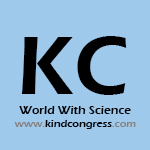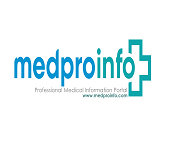Theme: Relieving Pain, Restoring Function, Renewing Hope
Venue: Holiday Inn Singapore Atrium, Singapore
Pain Medicine Congress 2019
Pain is a signal in your nervous system that something may be wrong. It is an unpleasant feeling, such as a prick, tingle, sting, burn, or ache. Pain may be sharp or dull. It may come and go, or it may be constant.Treatment depends on the cause and type of pain. There are drug treatments, including pain relievers. There are also non-drug treatments, such as acupuncture, physical therapy, and sometimes surgery.
Pain relievers are medicines that reduce or relieve headaches, sore muscles, arthritis, or other aches and pains. There are many different pain medicines, and each one has advantages and risks. Some types of pain respond better to certain medicines than others. Each person may also have a slightly different response to a pain reliever.
While acute pain is a normal sensation triggered in the nervous system to alert you to possible injury and the need to take care of yourself, chronic pain is different.Chronic pain persists. Pain signals keep firing in the nervous system for weeks, months, even years. There may have been an initial mishap sprained back, serious infection, or there may be an on-going cause of pain arthritis, cancer, ear infection, but some people suffer chronic pain in the absence of any past injury or evidence of body damage.
A person may have two or more co-existing chronic pain conditions. Such conditions can include chronic fatigue syndrome, endometriosis, fibromyalgia, inflammatory bowel disease, interstitial cystitis, temporomandibular joint dysfunction, and vulvodynia. It is not known whether these disorders share a common cause.
New Frontiers in Neuropathic Pain
The various neuropathic pains can be difficult to treat. However, with careful diagnosis and often a combination of methods of treatments, there is an excellent chance of improving the pain and return of function. Medications are a mainstay of treatment of neuropathic pain.
Most pain information is filtered out by the central nervous system, usually at the level of the spinal cord. Many medications to treat neuropathic pain operate on this filtering process. The types of medications used for neuropathic pain include antidepressants, which influence the amount of serotonin or norepinephrine, and anti-seizure medications, which act on various neurotransmitters, such as GABA and glycine.One of the most powerful tools in treating neuropathic pain is the spinal cord stimulator, which delivers tiny amounts of electrical energy directly onto the spine. Stimulation works by interrupting inappropriate pain information being sent up to the brain. It also creates a tingling in the pain extremity, which masks pain.
Headache is our most common form of pain and a major reason cited for days missed at work or school as well as visits to the doctor. The International Classification of Headache Disorders, published by the International Headache Society, is used to classify more than 150 types of primary and secondary headache disorders. Primary headaches occur independently and are not caused by another medical condition. Migraine, cluster, and tension-type headache are the more familiar types of primary headache.
Migraines are severe, recurring, and painful headaches. They can be preceded or accompanied by sensory warning signs and other symptoms.The extreme pain that migraines cause can last for hours or even days.According to the American Migraine Association, they affect 36 million Americans, or approximately 12 percent of the population. Migraines can follow an aura of sensory disturbances followed by a severe headache that often appears on one side of the head. They tend to affect people aged 15 to 55 years.
To a certain extent, medical practitioners have always been specialized. Specialization was common among Roman physicians. The particular system of modern medical specialties evolved gradually during the 19th century. The particular subdivision of the practice of medicine into various specialties varies from country to country, and is somewhat arbitrary. Pain management specialists are most commonly found in the following disciplines: Physiatry (also called Physical medicine and rehabilitation), Anaesthesiology, Interventional radiology, Physical therapy. Specialists in psychology, psychiatry, behavioural science, and other areas may also play an important role in a comprehensive pain management program.
Orofacial pain disorders are highly prevalent and debilitating conditions involving the head, face, and neck. These conditions represent a challenge to the clinician since the orofacial region is complex and therefore, pain can arise from many sources. The clinician needs to have solid knowledge of the pain conditions that arise from these structures for proper diagnosis and a multidisciplinary approach of management is strongly recommended.
Neuropathic Pain & Neuro Orthopaedics
Neuropathic pain is often described as a shooting or burning pain. It can go away on its own but is often chronic. Sometimes it is unrelenting and severe, and sometimes it comes and goes. It often is the result of nerve damage or a malfunctioning nervous system. The impact of nerve damage is a change in nerve function both at the site of the injury and areas around it.
Neuro-orthopaedic service offers the latest advances in diagnosis and treatment to patients whose arms or legs are impaired by brain injury, stroke, anoxia, central nervous disorders, or orthopaedic conditions.
Arthritis means joint inflammation, but the term is used to describe around 200 conditions that affect joints, the tissues that surround the joint, and other connective tissue. It is a rheumatic condition.The most common form of arthritis is osteoarthritis. Other common rheumatic conditions related to arthritis include gout, fibromyalgia, and rheumatoid arthritis (RA).
Inflammation is a defense mechanism in the body. The immune system recognizes damaged cells, irritants, and pathogens, and it begins the healing process.When something harmful or irritating affects a part of our body, there is a biological response to try to remove it. The signs and symptoms of inflammation can be uncomfortable but are a show that the body is trying to heal itself.
Cancer pain takes many forms. It can be dull, achy, sharp or burning. It can be constant, intermittent, mild, moderate or severe. How much pain you feel depends on a number of factors, including the type of cancer you have, how advanced it is, where it's situated and your pain tolerance.
Differently from the adult patients, in pediatric age it is more difficult to assess and treat efficaciously the pain and often this symptom is undertreated or not treated. In children, selection of appropriate pain assessment tools should consider age, cognitive level and the presence of eventual disability, type of pain and the situation in which it is occurring. Improved understanding of developmental neurobiology and paediatric analgesic drugs pharmacokinetics should facilitate a better management of childhood pain.
The last two decades have seen the emergence of significant evidence that has altered certain aspects of the management of acute pancreatitis. While most cases of acute pancreatitis are mild, the challenge remains in managing the severe cases and the complications associated with acute pancreatitis. Gallstones are still the most common cause with epidemiological trends indicating a rising incidence. The surgical management of acute gallstone pancreatitis has evolved. In this article, we revisit and review the methods in diagnosing acute pancreatitis. We present the evidence for the supportive management of the condition, and then discuss the management of acute gallstone pancreatitis. Based on the evidence, our local institutional pathways, and clinical experience, we have produced an outline to guide clinicians in the management of acute gallstone pancreatitis.
The current evidence supports infusions of local anaesthetics at the surgical site, continuous peripheral nerve blocks, and neuraxial analgesia for major thoracic and abdominal procedures. Ultrasound guidance can improve the performance of the blocks and different patient outcomes, although the incidence of peripheral nerve damage is not decreased. For chronic pain, the best available evidence is on nerve blocks for the diagnosis of facet joint pain. Further research is needed to validate diagnostic nerve blocks for other indications. Therapeutic blocks with only local anaesthetics (greater occipital nerve and sphenopalatine ganglion) are effective in headache. A possible mechanism is modulation of central nociceptive pathways. Therapeutic nerve blocks for other indications are mostly supported by retrospective studies and case series.
Physiotherapy can be defined as a treatment method that focuses on the science of movement and helps people to restore, maintain and maximize their physical strength, function, motion and overall well-being by addressing the underlying physical issues.
NSAIDs are more than just pain relievers. They also help reduce inflammation and lower fevers. They prevent blood from clotting, which is good in some cases but not so beneficial in others. For example, because they reduce clotting action, some NSAIDS, especially aspirin, may have a protective effect against heart disease. However, you may bruise more easily. Analgesics are medications designed to relieve the symptoms of pain.
Opioids are medically prescribed for two main reasons pain management and the treatment of heroin and other opioid dependence commonly referred to as Opioid Substitution Therapy or pharmacotherapy.
We extend a blithesome welcome to our World Congress on Pain Medicine and Management Conference Which is going to be held on September 9-10, 2019 at Singapore.
Pain Medicine conference will give a perfect platform for sharing and developing innovative ideas on the latest developments and future perspectives in the field of Medical and Palliative care for the treatment of various disorders. Attending the Pain Medicine 2019 is an investment in your career growth. It’s the best way to express your passion towards the Pain research and update your skills and enhance your knowledge.
Pain Medicine congress 2019 participants include Professors, Researchers, Physicians, Business Delegates, Scientists, students all over the world. The goal of the Pain Medicine congress 2019 is to provide you with a rare opportunity to build on what you already know in the research and development of new therapies and techniques and accelerate efforts to enhance health and well-being.
Pain Medicine congress 2019 is supported with related journals and their editorial board members which provide a chance of meeting them, along with experts in Pain medicine research, Palliative care, and Pharmacological Sciences. In order to accelerate the research in the field of Medical. Conference Series organizes different conferences worldwide.
Summary of Pain medicine congress 2019:
Pain is a signal in your nervous system that something may be wrong. It is an unpleasant feeling, such as a prick, tingle, sting, burn, or ache. Pain may be sharp or dull. It may come and go, or it may be constant
Treatment depends on the cause and type of pain. There are drug treatments, including pain relievers. There are also non-drug treatments, such as acupuncture, physical therapy, and sometimes surgery.
Pain relievers are medicines that reduce or relieve headaches, sore muscles, arthritis, or other aches and pains. There are many different pain medicines, and each one has advantages and risks. Some types of pain respond better to certain medicines than others. Each person may also have a slightly different response to a pain reliever.
Market analysis around the globe:
The scope of the report includes a detailed study of global and regional markets for pain management therapeutics with the reasons given for variations in the growth of the industry in certain regions.
The pain management therapeutics market is expected to exceed more than US$ 83 Billion by 2024; Growing at a CAGR of more than 3.5% in the given forecast period
Market analysis around Singapore:
Singapore ranks among the highest in the world for body and head pain, according the 2017 GSK Global Pain Index which surveyed 19,000 adults across 32 countries. About 85 per cent of 500 Singaporeans surveyed reported having experienced head and body pain, with four in 10 suffering body pain every week. It currently sees more than 6,000 patients each year, a number which is expected to rise exponentially with the rapidly ageing population.
The scope of this study encompasses psychiatric drugs in pharmaceutical markets. Technological issues include the latest trends and developments. The emerging market for enzyme inhibitors includes countries like India, China, Japan, Korea, Taiwan, Canada, Africa, Australia, New Zealand, etc.
Scope and importance:
Pain is one of the most common reasons clients seek medical attention, and is a symptom that is encountered by every health care provider. Health care professionals must be knowledgeable regarding effective and compassionate pain relief, while clients and their families should be assured such relief will be provided. Communication and collaboration between members of the healthcare team, the client and the family are essential in achieving adequate pain management. Ideally, the client directs the plan of care and the pain level to be achieved.
Chronic pain affects approximately 100 million in the US, making it one of the most common reasons for patients to seek medical care. Moreover, there are inadequate numbers of pain management specialists to help generalist providers manage these patients. Partly in response to the problem of under-treatment of pain, over the past decade there has been a four-fold increase in opioid prescribing. During the same time period there was a four-fold increase in unintentional opioid overdose deaths and a five-fold increase in substance abuse treatment admissions for prescription opioid addiction. Providers who prescribe ER/LA opioid analgesics to treat chronic pain are in a key position to balance the benefits and risks of chronic opioid therapy (COT). However, providers struggle with the need to assist their patients with adequate management of chronic pain while confronting the risks associated with opioid prescribing.
Why in Singapore:
Palliative care in Singapore has grown over the past few years and has benefited recently by public interest in end-of-life care. There are challenges that include the recruitment, education and retention of health care professionals interested in this field. Our clinical management of cancer pain needs to be reviewed and audited, and further research in this field in our part of the world will help inform our practice.
Conference Highlights
- Pain Medicine
- Acute and Chronic Pain
- New Frontiers in Neuropathic Pain
- Headache and Migraine
- Pain Management Specialist
- Orofacial Pain
- Neuropathic Pain & Neuro Orthopaedics
- Arthritis & Inflammation
- Cancer Pain Management
- Pediatric Pain Management
- Acute Pancreatitis
- Anesthesia as Pain Treatment
- Physiotherapy
- NSAIDs and Analgesics
- Opioids
- Physical Medicine and Rehabilitation
- Pain Management Nursing
- Current Therapies in Pain Management
- Geriatric Pain Management
- Current Diagnosis and Scoring Systems
Major Associations around the Globe
- The American Academy of Pain Medicine (AAPM)
- American Chronic Pain Association
- American Pain Society
- World Wide Headache Information Center
- Cancer Pain Release
- International Association for the Study of Pain
Major Associations in Singapore:
- The Pain Association of Singapore
- Singapore Medical Association (SMA)
Why to attend?
World Congress on Pain Medicine and Management is a unique forum to bring together worldwide distinguished academics in the field of Medicine and palliative care, researchers, public health professionals, scientists, academic scientists, industry researchers, scholars to exchange about state of the art research and technologies.
Target Audience
- Directors
- Head of Department
- Professors
- Industrial
- Neurologists
- Psychiatrists
- Neuroscientists
- Students from Academia in the research of Medicine and palliative care
Top Medicine Universities in Globe
- Harvard University, Harvard Medical School
- University of California, San Francisco, School of Medicine
- University of Washington, School of Medicine
- Johns Hopkins University, School of Medicine
- Stanford University School of Medicine
- University of Cambridge, School of Clinical Medicine
- Columbia University Medical Center
- University College London Medical School
Universities in Singapore
- Johns Hopkins Singapore
- Yong Loo Lin School of Medicine
- Duke-NUS Graduate Medical School Singapore
- Academy of Medicine
- SGH Postgraduate Medical Institute
Hospitals Associated with Pain Medicine Research
All around the globe there are more than 10000 hospitals working on Pain Management
Some of them among them are:
- University of Missouri Health System: University Hospital
- Nuffield Health Bristol Hospital – The Chesterfield – Bristol, U.K.
- Upper River Valley Hospital
- El Camino Hospital
- Johns Hopkins Hospital
Hospitals Associated with Pain Medicine Research in singapore
- Johns Hopkins Singapore
- Pain Management Centre
- Tan Tock Seng Hospital
- Ng Teng Fong General Hospital
- Parkway East Hospital
Companies Associated with Pain medicine and research in World:
- AstraZeneca
- GlaxoSmithKline
- Merck
- Sanofi
- Abbott Laboratories
- Genentech, Inc.
- Medtronic plc
- GE Healthcare
- Stryker Corporation
- Abbvie
- Impax labs
- Genzyme
- AstraZeneca
- Forest Laboratories
- Chelsea therapeutics
Conference Highlights
- Pain Medicine
- Acute and Chronic Pain
- New Frontiers in Neuropathic Pain
- Headache and Migraine
- Pain Management Specialist
- Orofacial Pain
- Neuropathic Pain & Neuro Orthopaedics
- Arthritis & Inflammation
- Cancer Pain Management
- Pediatric Pain Management
- Anesthesia as Pain Treatment
- Non pharmacological Tx for Pain
- Drugs and side effects
- Pain syndromes and its types
To share your views and research, please click here to register for the Conference.
To Collaborate Scientific Professionals around the World
| Conference Date | September 9-10, 2019 | ||
| Sponsors & Exhibitors |
|
||
| Speaker Opportunity Closed | Day 1 | ||
| Poster Opportunity Closed | Click Here to View | ||
Useful Links
Special Issues
All accepted abstracts will be published in respective Our International Journals.
- Journal of Pain & Relief
- Journal of Pain Management & Medicine
- Journal of Palliative Care & Medicine
Abstracts will be provided with Digital Object Identifier by









